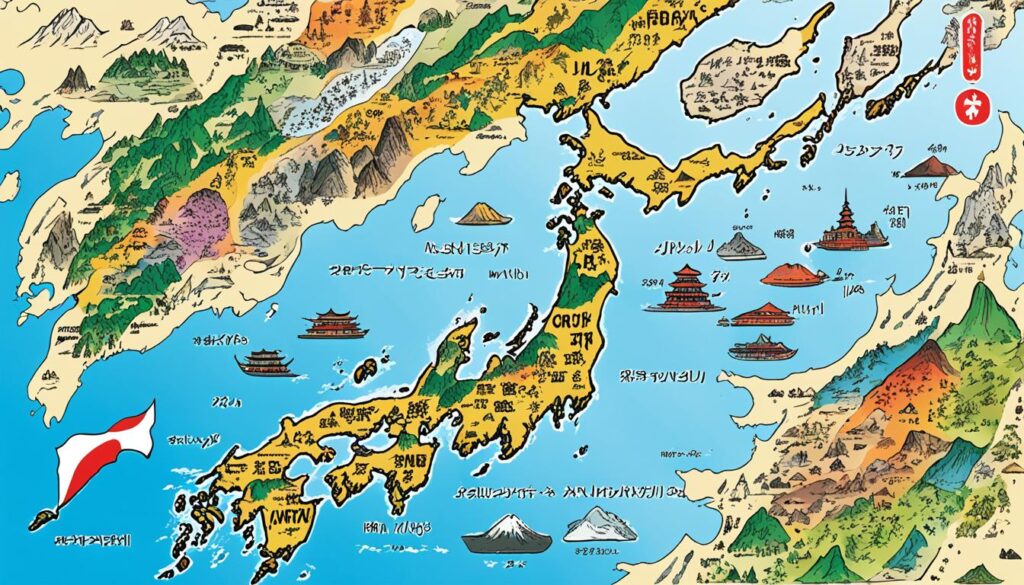When it comes to preserving linguistic diversity, every language counts. Nowhere is this more evident than in the case of the Nivkh language, also known as Gilyak. Spoken by the Nivkh people in the Russian Far East, the Nivkh language is facing the threat of extinction.
With its rich history, unique alphabet, and complex grammar, the Nivkh language is an invaluable cultural treasure. However, the number of native speakers has dwindled over the years, pushing it to the brink of endangerment. Efforts are now underway to revive and preserve this indigenous language, ensuring its survival for future generations.
In this article, we will delve into the fascinating world of the Nivkh language, exploring its origins, features, and the challenges it faces as an endangered language. Join us as we uncover the importance of preserving the Nivkh language and the rich cultural heritage it represents.
The Nivkh People and their Linguistic Heritage
The Nivkh people, also known as Gilyaks, are an indigenous ethnic group residing in the northern half of Sakhalin Island and the lower Amur River and coast in Russia. They have a deep-rooted cultural heritage intertwined with the Nivkh Language and Nivkh culture. Traditionally, the Nivkh were fishermen, hunters, and dog breeders, leading a semi-nomadic lifestyle. They maintained enduring trade and cultural connections with neighboring China and Japan. However, colonization and collectivization have significantly impacted their traditional way of life. Presently, the Nivkh people live in Russian-style housing and have embraced several aspects of Russian culture.
The Nivkh people, also referred to as Gilyaks, are an indigenous ethnic group inhabiting the northern half of Sakhalin Island and the lower Amur River and coast on the adjacent Russian mainland. They have a rich cultural heritage closely tied to the Nivkh language. Traditionally, the Nivkh were fishermen, hunters, and dog breeders, with a semi-nomadic lifestyle. They maintained trade and cultural relations with neighboring China and Japan. However, colonization and collectivization have significantly impacted their traditional way of life. Today, the Nivkh people live in Russian-style housing and have adopted many aspects of Russian culture.
The Features of the Nivkh Language
The Nivkh language is a unique and fascinating language that exhibits various distinctive features. Understanding these features is crucial to gaining a comprehensive understanding of the Nivkh language and its structure.
Nivkh Alphabet
The Nivkh language traditionally did not have a written form. However, in recent years, efforts have been made to develop a standardized orthography for the language. A newly created Cyrillic alphabet is now used to write Nivkh.
Nivkh Grammar
Nivkh grammar is agglutinative and synthetic, meaning that grammatical information is conveyed through the addition of affixes to the root words. The language has a developed case system and does not have grammatical gender.
Verbs in Nivkh are particularly noteworthy, as they are used to describe qualities instead of using adjectives. This feature adds a unique dimension to how actions and qualities are expressed in the language.
Nivkh Vocabulary
The Nivkh language has a rich vocabulary that encompasses various domains of knowledge. Nouns, pronouns, and numerals in Nivkh have different cases depending on the dialect.
Phonetic System and Stress Patterns
The Nivkh language has a phonetic system characterized by regular vowel alternations and movable stress. These features contribute to the distinct sounds and rhythm of the language.
To illustrate the unique structure of the Nivkh language, here is an example of a simple sentence:
Ali vɨtokho kæ an.
This sentence translates to “Ali catches fish.”
The Parts of Speech and Word Order
The Nivkh language consists of eight parts of speech, including nouns, verbs, adverbs, adjectives, pronouns, particles, numerals, and postpositions. Verbs can convey information about voice, mood, aspect, tense, number, person, and negation.
In terms of word order, the basic structure of a Nivkh sentence is subject-object-verb (SOV). This is a characteristic feature of many languages in the region.
Nivkh Dialects
The Nivkh language exhibits dialectal variation across different regions. The main dialects include the Amur dialect, North Sakhalin dialect, East Sakhalin dialect, and South Sakhalin dialect. These dialects have differences in terms of phonetics, morphology, and lexicon.
| Dialect | Characteristic |
|---|---|
| Amur dialect | Phonetic differences, distinct vocabulary |
| North Sakhalin dialect | Strong influence from Russian |
| East Sakhalin dialect | Influence from Japan and Korean languages |
| South Sakhalin dialect | Features similarities with Ainu language |
Overall, the Nivkh language is a complex and beautifully structured language that reflects the unique cultural and linguistic heritage of the Nivkh people. Efforts to preserve, standardize, and revitalize the Nivkh language are essential for the preservation of this endangered language.

The Endangered Status of the Nivkh Language
The Nivkh language, also known as Gilyak, is facing the threat of extinction. Classified as a critically endangered language by the UNESCO Atlas of the World’s Languages in Danger, the Nivkh language is at risk of disappearing entirely. The dwindling number of native speakers, less than 5% of the ethnic Nivkh population, highlights the urgent need for preservation efforts.
The decline of the Nivkh language can be attributed to various factors. Forced resettlement, colonization, and the dominance of the Russian language have contributed to the erosion of indigenous languages like Nivkh. The suppression of indigenous cultures and languages during historical periods has had a lasting impact on the Nivkh people and their linguistic heritage.
However, there is hope for revitalizing the Nivkh language. Language preservation programs, education initiatives, and cultural revitalization projects have been implemented to raise awareness and support for the endangered language. These efforts aim to empower the Nivkh community and ensure the survival of their linguistic identity.
“Preserving endangered languages is not just about preserving words; it’s about preserving cultures, histories, and diverse ways of understanding the world. The loss of a language is a loss of unique knowledge and perspectives.”– Linguist and Language Preservation Advocate
The revival of the Nivkh language is crucial for the preservation of indigenous cultures and the promotion of linguistic diversity. By celebrating and valuing endangered languages like Nivkh, we can foster a more inclusive and culturally rich global community.
The Importance of Indigenous Languages
Indigenous languages hold immense value beyond linguistic communication. They embody the history, traditions, and worldview of their respective communities. Preserving indigenous languages is crucial for the cultural heritage and self-identity of indigenous peoples. Moreover, linguistic diversity contributes to the overall linguistic landscape and promotes a deeper understanding of human thought and expression.
The Geographic Spread and Dialects of the Nivkh Language
The Nivkh language, also known as Gilyak, is primarily spoken in the Sakhalin Oblast and Khabarovsk Krai regions of the Russian Far East. It is an integral part of the Nivkh culture and heritage.
Within the Nivkh language family, there are four main dialects:
- Amur dialect
- North Sakhalin dialect
- East Sakhalin dialect
- South Sakhalin dialect
These dialects exhibit significant differences in terms of phonetics, morphology, and lexicon. Some dialects even have low mutual intelligibility, leading to the classification of two or three separate languages within the Nivkh language family.
However, for the purpose of language revival and preservation, Nivkh is generally presented as a single language.
| Dialect | Phonetics | Morphology | Lexicon |
|---|---|---|---|
| Amur dialect | Distinctive phonetic features | Divergent morphological patterns | Unique vocabulary |
| North Sakhalin dialect | Vowel pronunciation variations | Similar morphological patterns to Amur dialect | Shared lexicon with Amur dialect |
| East Sakhalin dialect | Phonetic distinctions in glottal and nasal sounds | Parallel morphological structures | Common lexicon with North Sakhalin dialect |
| South Sakhalin dialect | Distinct phonetic shifts in certain sounds | Simpler morphological patterns | Varying lexicon compared to other dialects |
The diversity of the Nivkh dialects reflects the rich linguistic heritage of the Nivkh people and their regional variations. Understanding these dialects is crucial for preserving the unique cultural and linguistic identity of the Nivkh community.

Efforts are being made to document and analyze these dialects, as well as to promote mutual understanding among Nivkh speakers from different regions. By acknowledging and celebrating the linguistic diversity within the Nivkh language, steps are being taken to ensure the continued survival and cultural significance of this endangered language.
Language Contacts and Genetic Affiliation
The Nivkh language, also known as Gilyak, is an isolate language, meaning it is not known to be related to any other language. However, scholars have proposed various hypotheses regarding its genetic affiliation based on linguistic similarities.
Some hypotheses suggest links between the Nivkh language and Tungus-Manchu, Turkic, Chukchi, Mongol, Chinese, and Native American Indian languages. These proposals highlight certain shared features and lexical similarities, indicating a potential genetic connection to these language families.
In addition to genetic affiliation, the Nivkh language has also had language contact with several neighboring languages. The Nivkh people, living in close proximity to Russia and Japan, have had interactions with the Russian, Japanese, Even, Orochi, Nanai, and Ulchi languages. These language contacts have influenced the Nivkh language, leading to borrowed words and cultural exchanges.
“The Nivkh language showcases its unique linguistic characteristics, but its genetic affiliation continues to be a topic of scholarly debate and research.”
The issue of genetic affiliation is complex due to the limited available linguistic data and cultural interactions over time. Further research and analysis are necessary to definitively determine the genetic roots of the Nivkh language and unravel its intricate language contacts with neighboring languages.
The Current State of the Nivkh Language
The Nivkh language, also known as Gilyak, is facing a critical situation with a significant decline in the number of native speakers. According to the 1989 census, only 23.3% of the Nivkh population were able to speak their native language. This number has alarmingly dwindled over the years, and the 2010 census recorded a mere 198 native speakers, which is less than 4% of the entire ethnic population.
This decline in native speakers is indicative of the endangerment of the Nivkh language. Factors such as forced resettlement, colonization, and the dominance of the Russian language have contributed to this decline. The younger generations are increasingly bilingual, speaking both Nivkh and Russian, but their fluency in the Nivkh language is often limited.
Efforts are being made to preserve and revitalize the Nivkh language in order to ensure its survival. One of the key strategies is the inclusion of Nivkh language education in schools. By introducing the language at an early stage, there is hope to instill a sense of pride and identity among the Nivkh youth and motivate them to use and preserve their native language.
In addition to language education, the publication of Nivkh language books and newspapers contributes to the accessibility and visibility of the language. These resources provide opportunities for Nivkh speakers to continue using and developing their language skills.
“The preservation and revitalization of the Nivkh language are crucial in safeguarding the cultural heritage and identity of the Nivkh people.”
Efforts are also focused on raising awareness about the importance of the Nivkh language within the community and promoting its use in various cultural and social contexts. It is through these collective efforts that the Nivkh language can be kept alive and handed down to future generations.
Current State of the Nivkh Language
| Nivkh Population | Native Speakers | Percentage |
|---|---|---|
| 1989 Census | 23.3% | |
| 2010 Census | 198 | Less than 4% |
Conclusion
The Nivkh language is not only an endangered language but also a treasure that reflects the rich indigenous culture and history of Japan. Despite its critically endangered status, efforts are being made to preserve and revitalize the Nivkh language, recognizing its importance in preserving the unique identity and history of the Nivkh people.
Language preservation programs and cultural initiatives are being implemented to ensure the survival of the Nivkh language for future generations. These efforts aim to not only conserve the linguistic heritage of the Nivkh people but also to foster a deeper understanding and appreciation of their culture.
For the Nivkh people, their language is more than just a means of communication; it is a source of pride and a symbol of their distinctive cultural identity. By preserving and revitalizing the Nivkh language, the Nivkh people are actively safeguarding a crucial part of their heritage, ensuring that their traditions, stories, and values continue to be passed down through the generations.
FAQ
What is the Nivkh language?
The Nivkh language, also known as Gilyak, is the language spoken by the Nivkh people in the Russian Far East. It is classified as a critically endangered language.
Who are the Nivkh people?
The Nivkh people, also known as Gilyaks, are an indigenous ethnic group inhabiting the Russian Far East. They have a rich cultural heritage closely tied to the Nivkh language.
What are the features of the Nivkh language?
The Nivkh language is agglutinative and synthetic, with a developed case system and no grammatical gender. It has a unique phonetic system and a newly created Cyrillic alphabet.
Is the Nivkh language endangered?
Yes, the Nivkh language is classified as a critically endangered language by UNESCO. The number of native speakers has significantly declined over the years.
Where is the Nivkh language spoken?
The Nivkh language is primarily spoken in the Sakhalin Oblast and Khabarovsk Krai regions of the Russian Far East.
Does the Nivkh language have different dialects?
Yes, the Nivkh language has four main dialects: the Amur dialect, North Sakhalin dialect, East Sakhalin dialect, and South Sakhalin dialect.
Is the Nivkh language related to any other language?
The Nivkh language is considered to be an isolate and not known to be related to any other language. Various hypotheses suggest similarities with other languages, but it is still a topic of ongoing research and debate.
What is the current state of the Nivkh language?
The Nivkh language has experienced a significant decline in the number of native speakers. Efforts are being made to preserve and revitalize the language through education initiatives and cultural projects.
